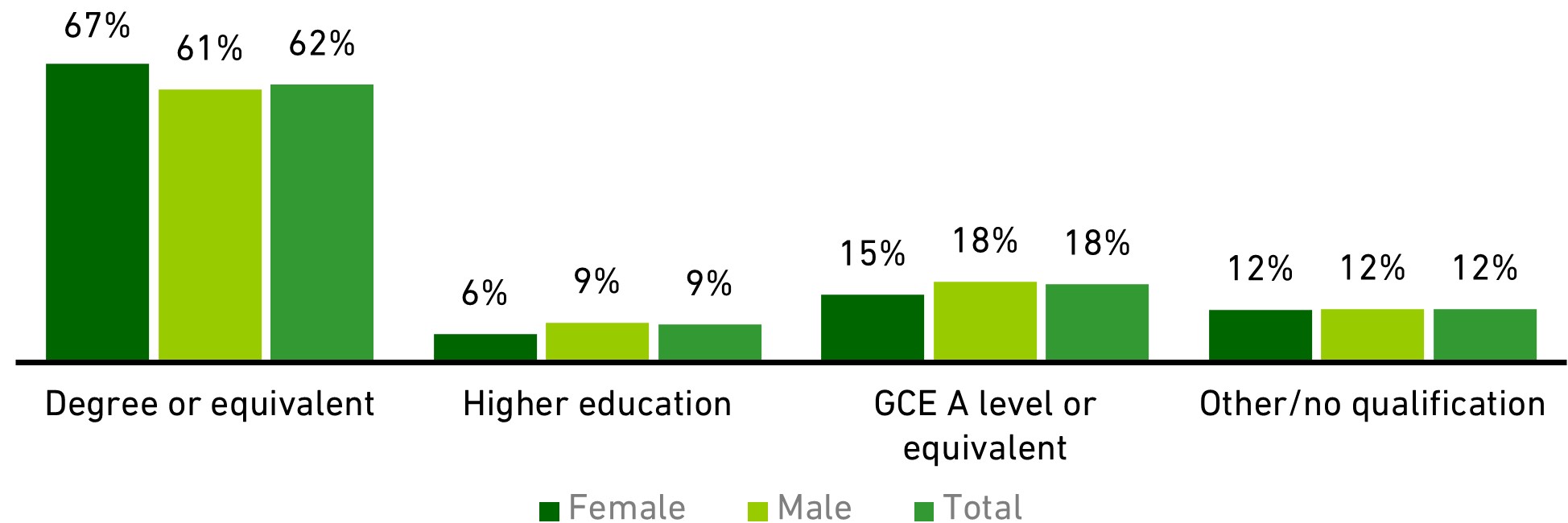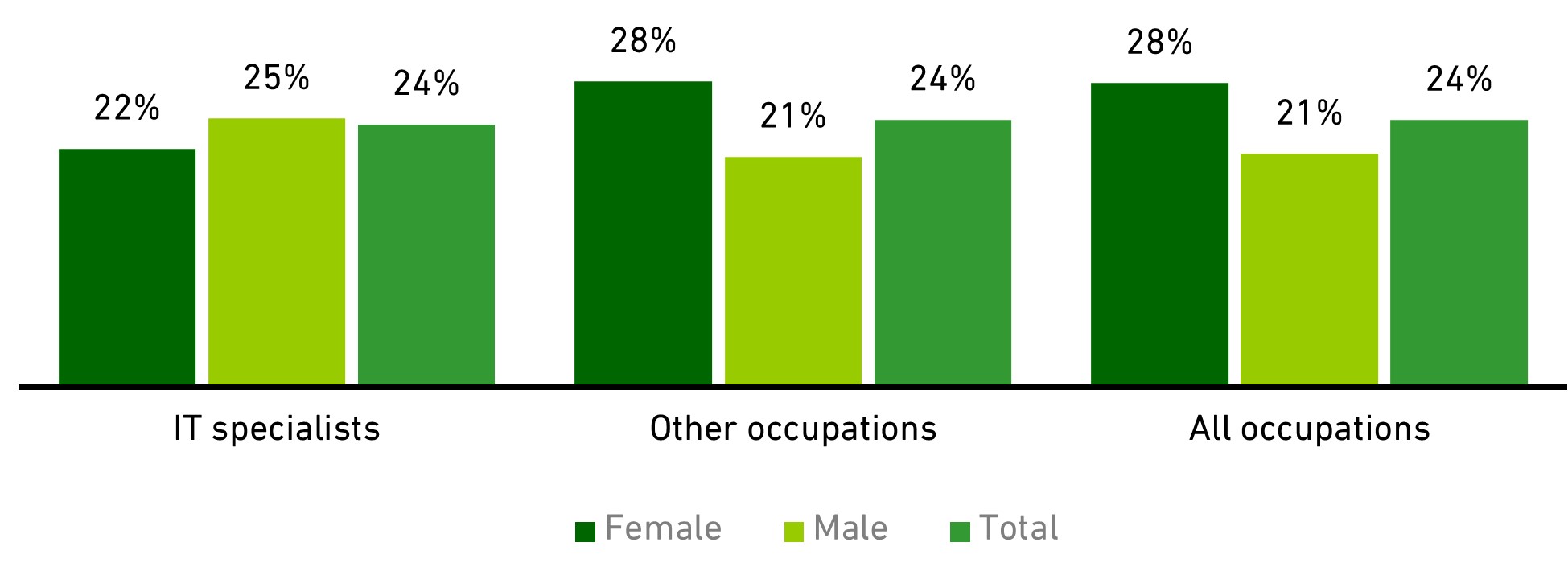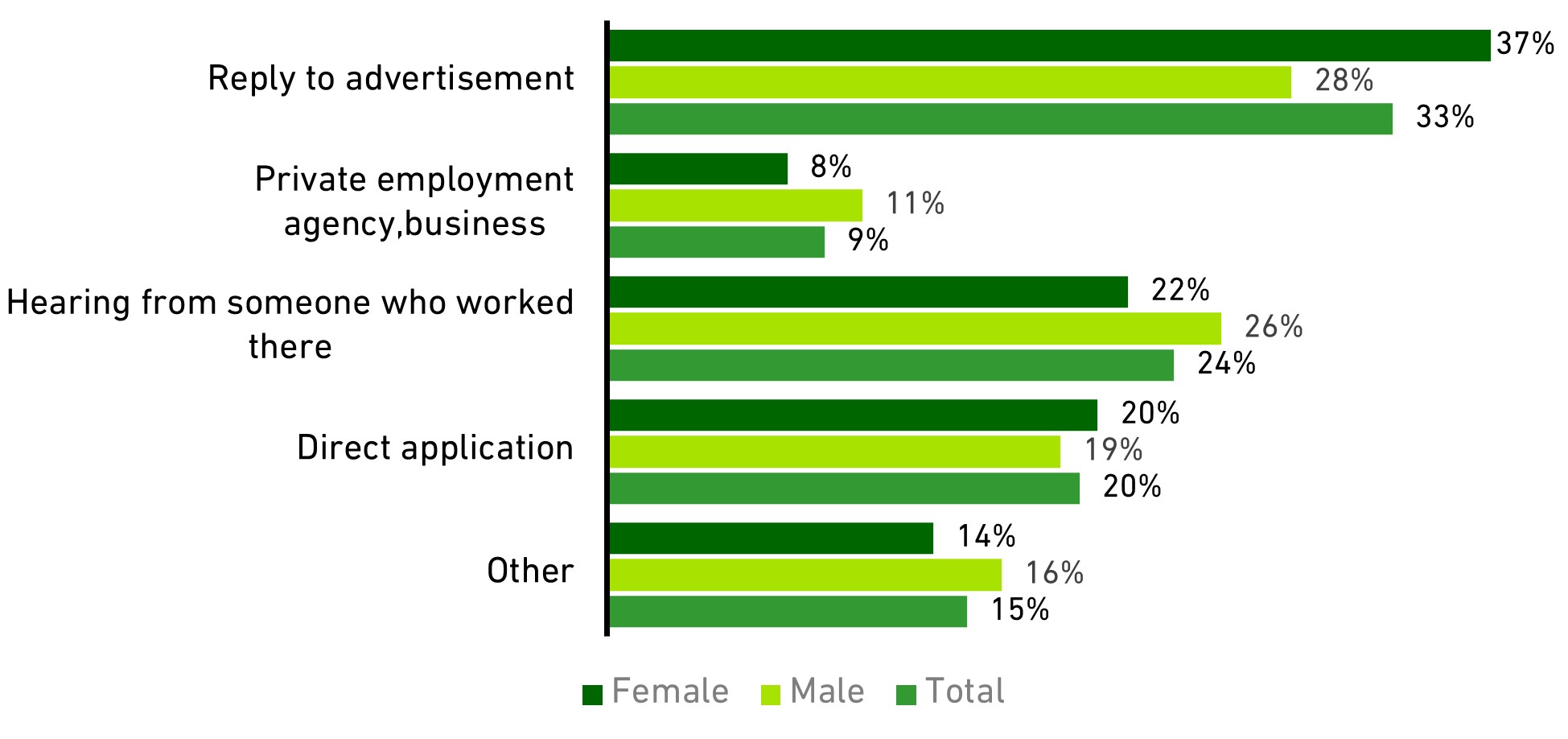Skills
Qualifications held
Female IT specialists appear to be more highly qualified than their male counterparts and in 2020, more than seven in ten (73%) held a degree or equivalent level qualification (compared with 70% of men working in such roles).
This contrasts with the situation within the workforce as a whole, where 52% of women and 49% of men were found to have qualifications at this level.
Level of educational attainment amongst IT specialists (2020)

Source: Analysis of ONS Quarterly Labour Force Survey by BCS
Though more likely to have a degree level qualification, female IT specialists are much less likely than males to have a degree in an IT related discipline - just 6% of female IT specialists stating that they held a qualification of this nature in 2020 compared with 14% for males working in IT roles.
IT specialists holding computing degrees (2020)

Source: Analysis of ONS Quarterly Labour Force Survey by BCS
Skills development
In general, female workers are more likely to receive job-related education / training than males (28% and 24% respectively stating that they had received education / training during the previous 13 weeks when surveyed in 2020) though amongst IT specialists in 2020, the reverse was found to be true, with 22% of women and 24% of men working in IT roles receiving education/training.
Job-related education / training in the past 13 weeks (2020)

Source: Analysis of ONS Quarterly Labour Force Survey by BCS
Skills sourcing
As with other UK employees, the most common identifiable means of IT specialists[4] securing a job (where stated) during the 2016-20 period was by ‘replying to an advertisement’ (33% of those who had been with their employer for less than one year stating they had secured work in this manner) and this was true for both female and male IT specialists. That said, the proportion of female IT specialists finding work in this way was much greater than for males (37% and 28% respectively stating this to have been the case).
The next most common means of IT specialists securing a job was via contacts already working with the employer and direct applications.
As illustrated below, the likelihood that female IT specialists have obtained work through an agency or in-work contact is notably lower than amongst male IT workers (three and four percentage points respectively).
Means of finding work amongst IT specialists (2016-2020)

Source: Analysis of ONS Quarterly Labour Force Survey by BCS
[4] Employees / people on government schemes who have been with their current employer for less than one year/12 months prior to being interviewed for the LFS.













